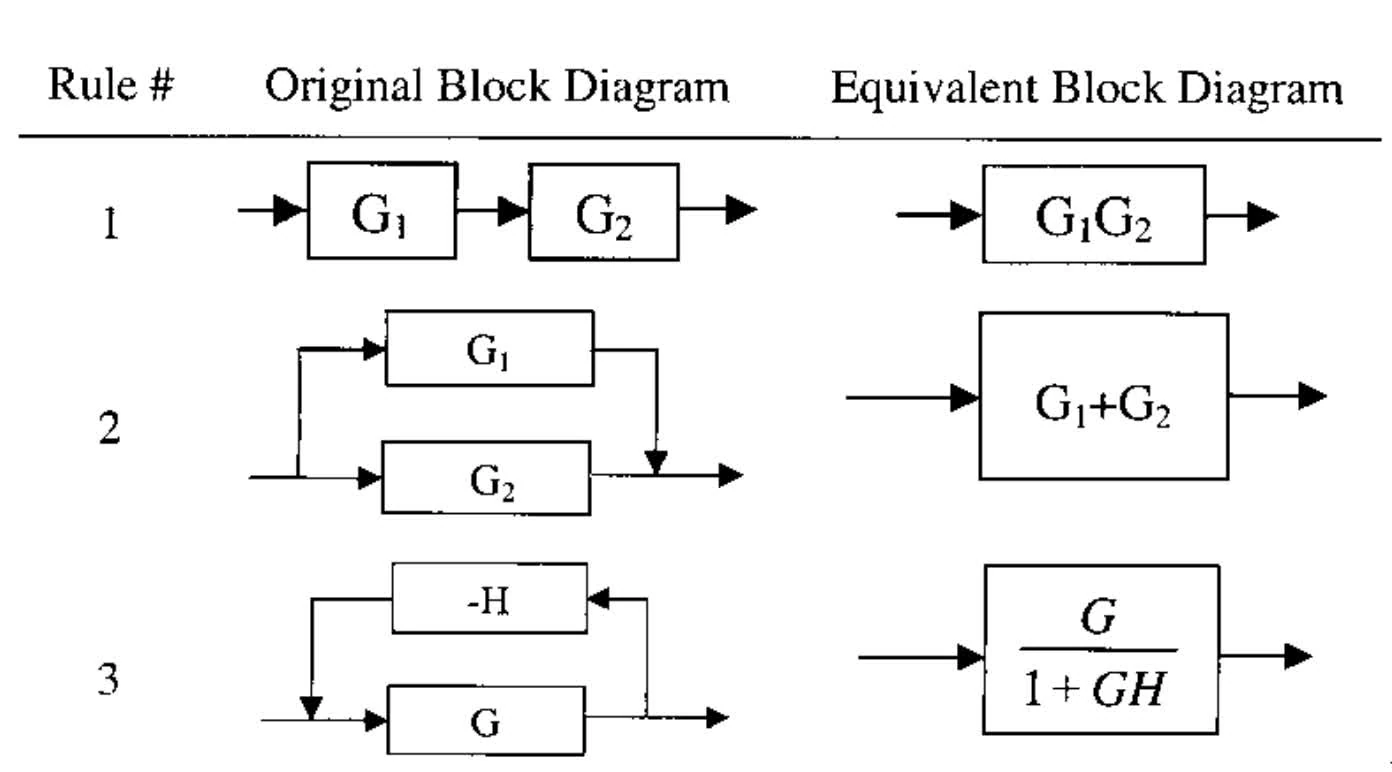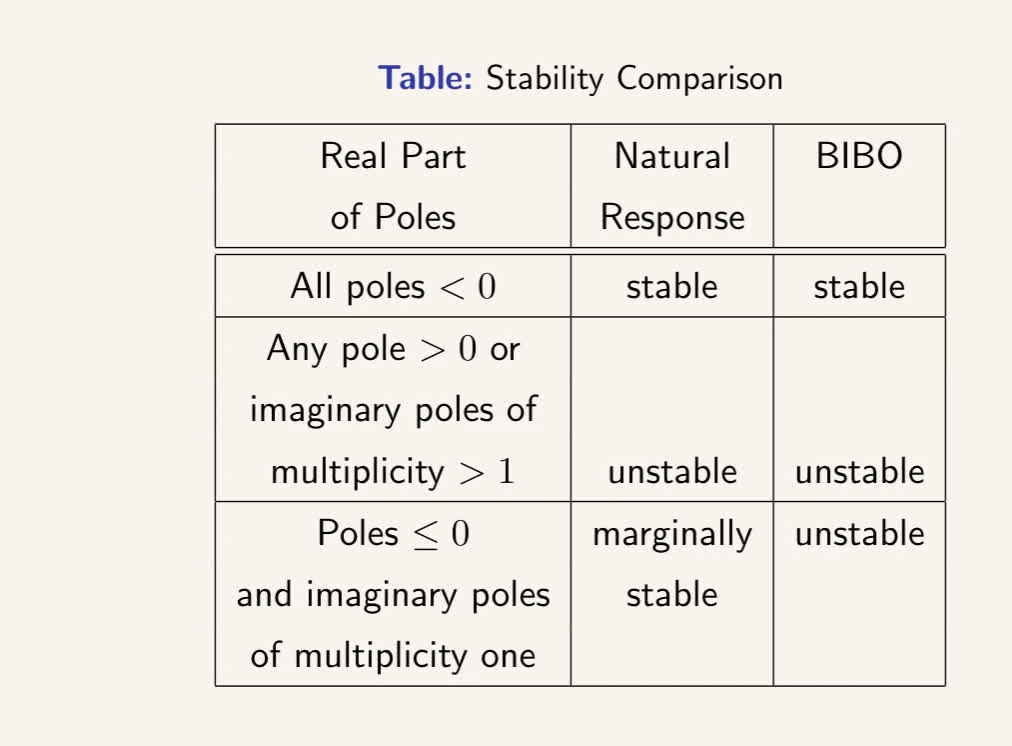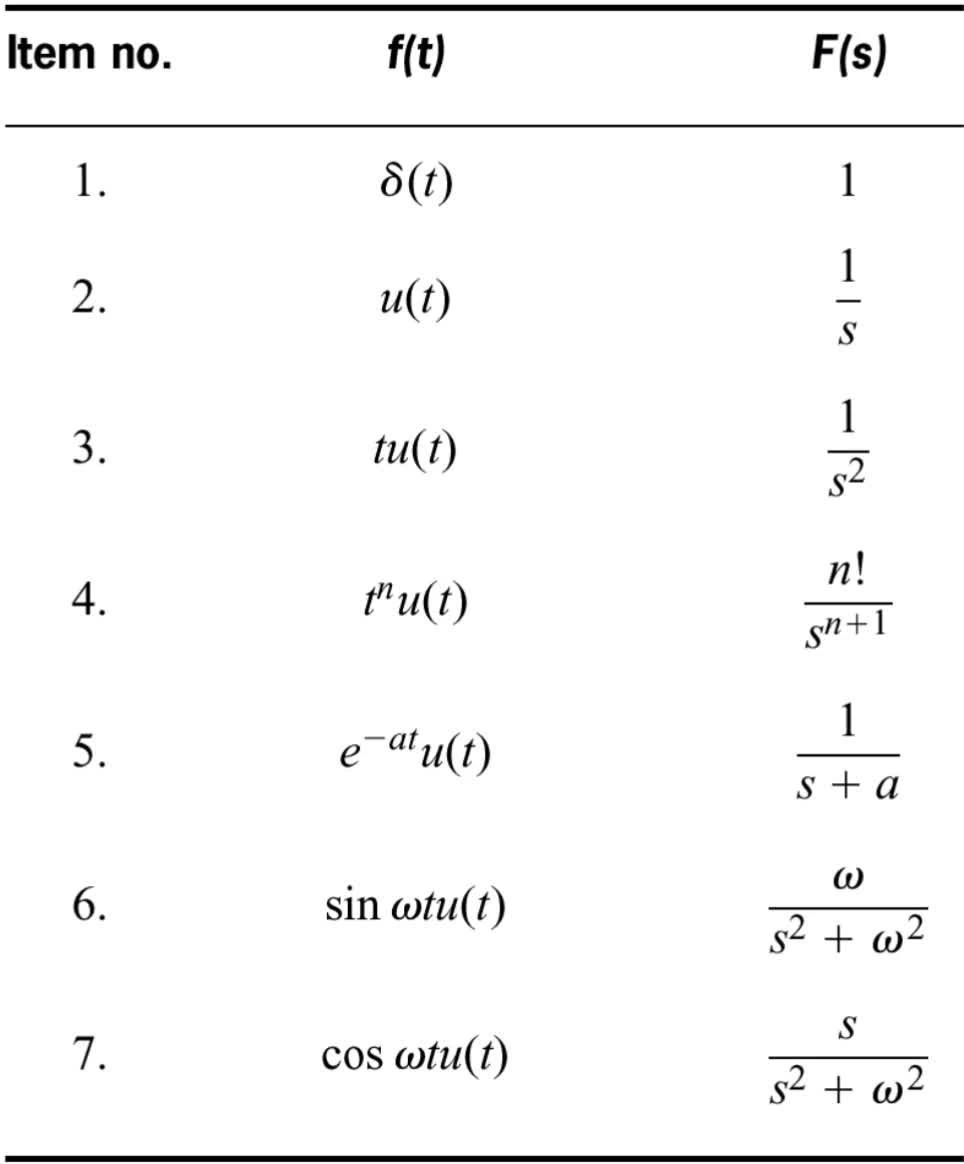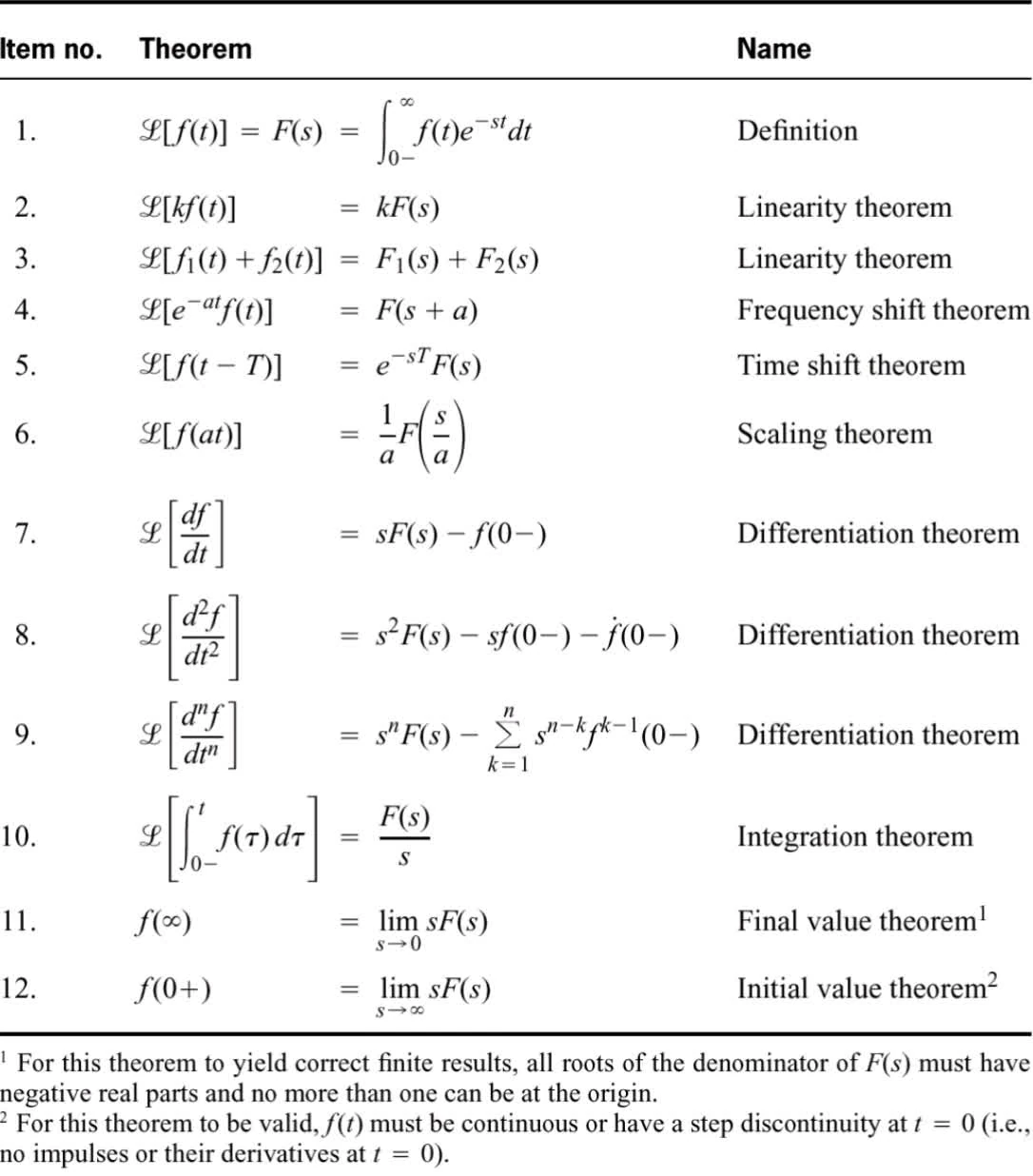Tout ce qu'il faut savoir sur la conception des systèmes de contrôle
See also source for code and jupyter notebook
Book: ISBN: 978-1-119-47422-7 and pdf
sp.Heaviside(t) is u(t)
import sympy
import sympy as sp
from symbol import symbols, apart, inverse_laplace_transform, simplify
from sympy.abc import s, t
See notes
Transfer function
nth order linear, time-invariant (LTI) differential equation:
andtndnc(t)+an−1dtn−1dn−1c(t)+⋯+a0c(t)=bmdtmdmr(t)+bm−1dtm−1dm−1r(t)+⋯+b0r(t)
takes Laplace transform from both side
ansnC(s)+an−1sn−1C(s)+⋯+a0C(s) and init terms for c(t)=bmsmR(s)+bm−1sm−1R(s)+⋯+b0R(s) and init terms for r(t)
assume initial conditions are zero
(ansn+an−1sn−1+⋯+a0)C(s)R(s)C(s)=(bmsm+bm−1sm−1+⋯+b0)R(s)=G(s)=ansn+an−1sn−1+⋯+a0bmsm+bm−1sm−1+⋯+b0
G(s)=R(s)C(s)
Q: G(s)=S+21. Input: u(t). What is y(t) ?
Y(s)y(t)=G(s)⋅u(s)→Y(s)=s(s+2)1=sA+s+2B=2⋅s1−2⋅(s+2)1=−21(1−e−2t)u(t)
Transfer function with feedback is under form
1+G(s)H(s)G(s)
Equivalent Resistance and Impedance

 x˙y=Ax+Bu=Cx+Du
x˙y=Ax+Bu=Cx+Du
Given
G(s)=sn+∑i=1n−1aisi+a0∑i=1n−1bisi+b0=U(s)Y(s)
We get controller canonical state space form:
x˙(t) y(t)=0 0 ⋮ 0 0 −a010⋮00−a101⋮00−a2⋯⋯⋱⋯⋯⋯00⋮10−an−200⋮01−an−1x(t)+0 0 ⋮ 0 0 1u(t)=[b0b1⋯bn−2bn−1]x(t).
We get observer canonical state space form:
x˙(t)y(t)=−an−1−an−2⋮−a2−a1−a010⋮00001⋮000⋯⋯⋱⋯⋯⋯00⋮10000⋮010x(t)+bn−1bn−2⋮b2b1b0u(t)=[10⋯00]x(t).
See this for applications
Necessary and sufficient condition for stability
to have all roots in open left hand plane is to have all coefficients of polynomial to be present and have same sign.

Routh table
To find transfer function for a system given a step response graph, *look for time over around 63% of the final value$
Closed-loop transfer function
T(s)=1+G(s)G(s)
%OS (percent overshoot)
%OS=eζπ/1−ζ2×100%
If a unity feedback system has a feedforward transfer function G(s) then transfer function R(s)E(s) can be derived as:
C(s) E(s)=E(s)⋅G(s)=R(s)−C(s)
For G(s)=K we get R(s)E(s)=1+G(s)1
state space design
Closed-loop system characteristic equation
det(SI−(A−BK))
Gain and Phase Stability Margins
Closed loop pole exists when
1+KG(s)H(s)=0
zero order hold
Nyqust frequency:
fN=21fs
Set the third pole to s=-2 to cancel a zero as third pole.




